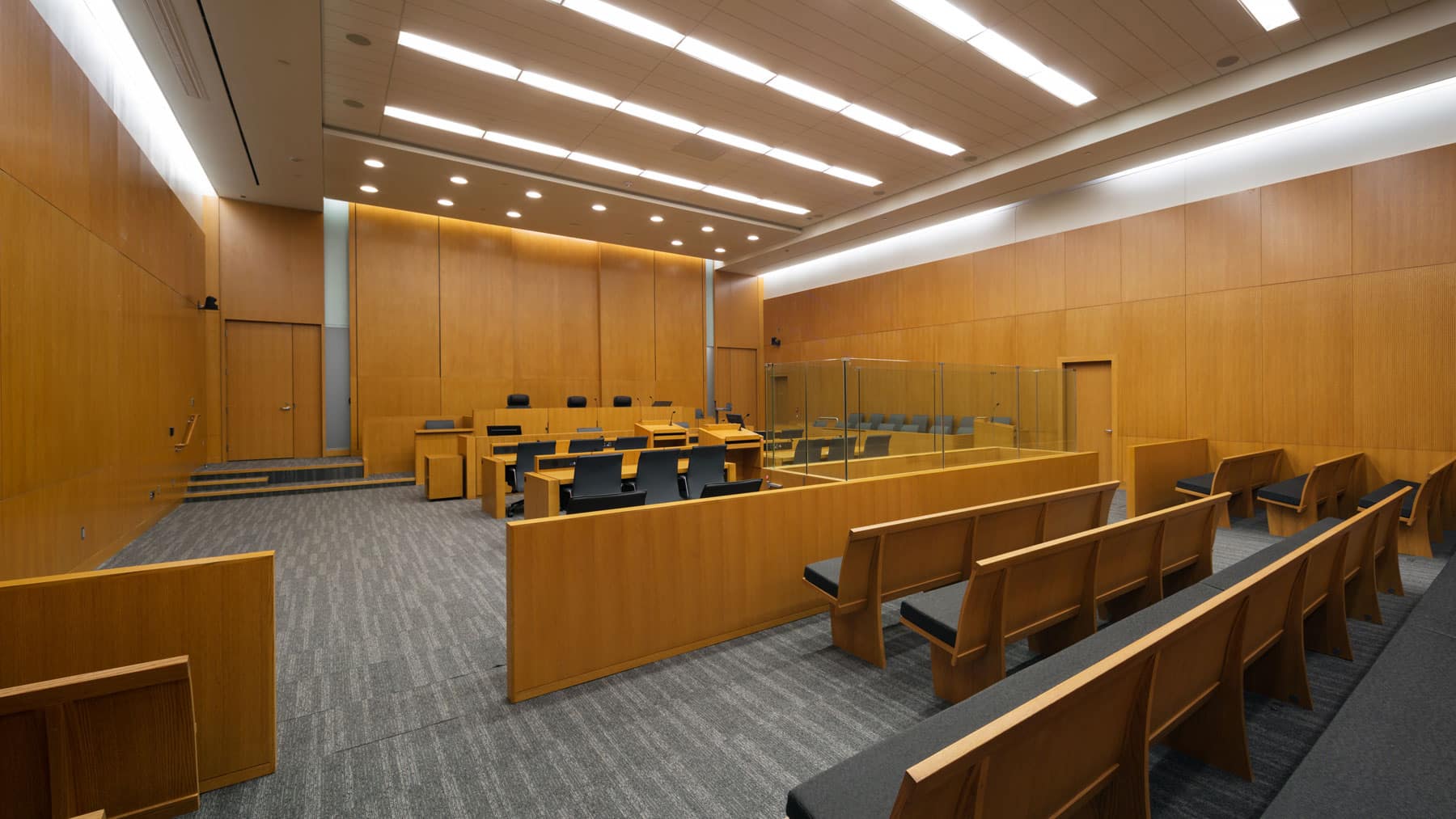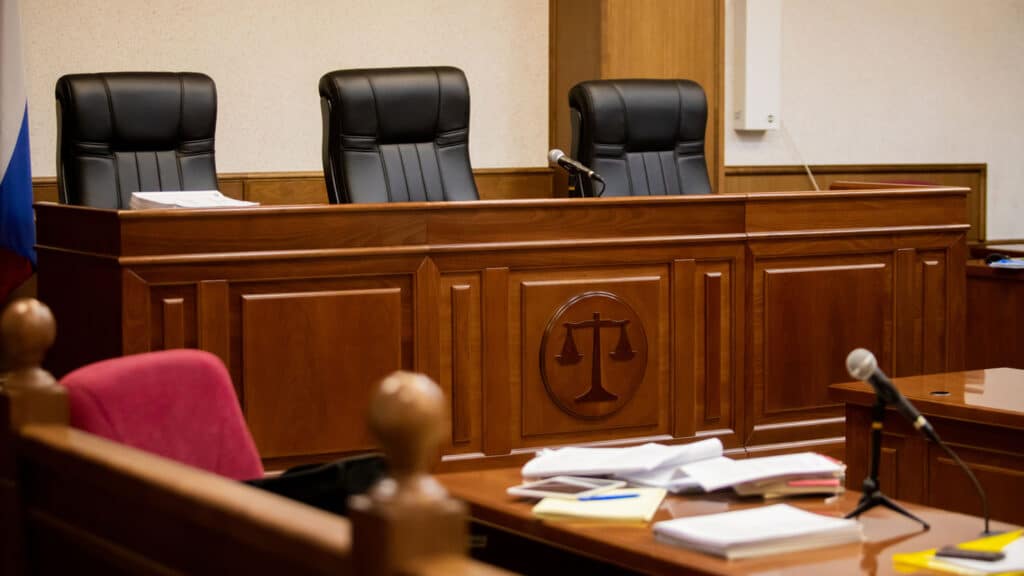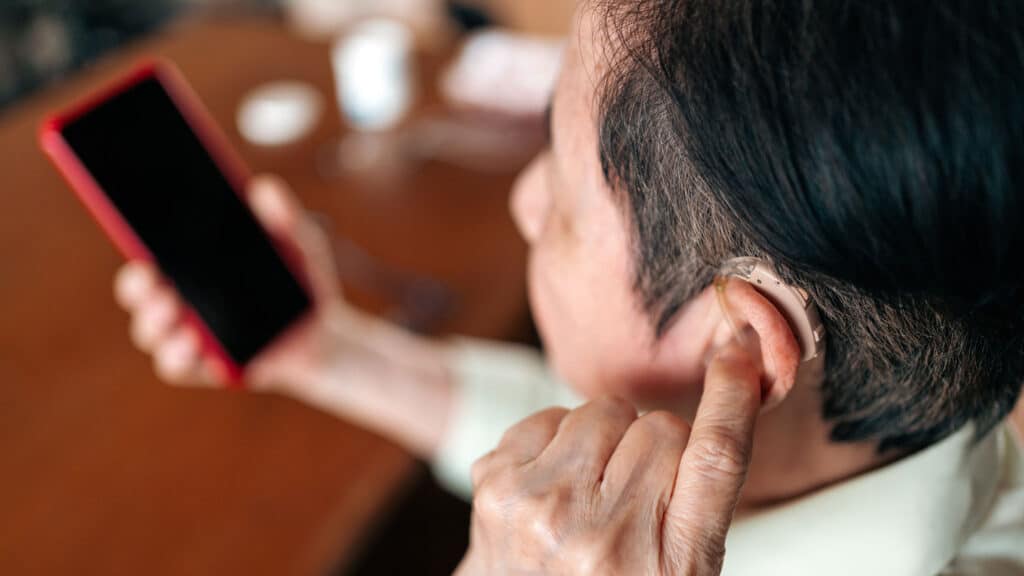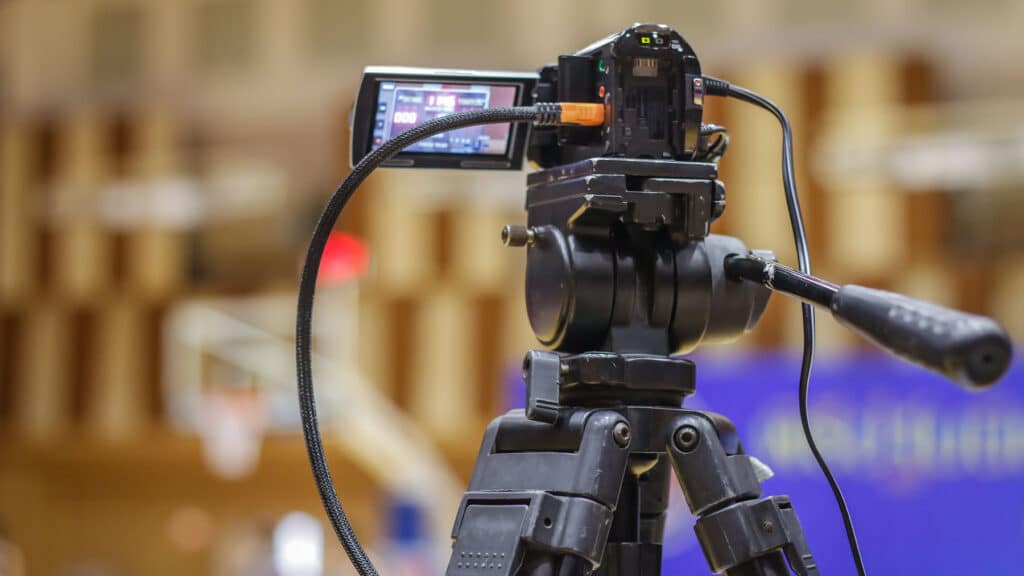The Courtroom Is Changing. Quietly, Powerfully, and Pixel by Pixel
The courtroom isn’t what it used to be. Gone are the squeaky overhead projectors and fuzzy microphones that cut out during cross-examination. Today’s courtrooms are powered by high-performance audio visual systems that do more than just keep the lights and speakers on. They shape the clarity of testimony. The pace of justice. The confidence of everyone in the room, from judge to jury to the person on trial.
Modern courthouse AV systems aren’t about flash. They’re about precision. Every screen, microphone, and line of code needs to work together, without distractions or second guesses. When the stakes are this high, the technology has to be invisible, but flawless.
So what’s behind a high-functioning, future-ready courtroom AV setup? These are the technologies that matter most, and why smart courts are investing in them now.
1. Digital Evidence Presentation Systems
In a courtroom, evidence needs to speak for itself. That means every image, document, and video must be presented clearly and without technical hiccups. Digital evidence presentation systems make that possible. Think touch-enabled monitors for the judge and attorneys, high-resolution document cameras, and annotation tools that allow evidence to be marked up and explained in real time.
But the tech alone isn’t enough. What makes these systems truly effective is how seamlessly they’re integrated into the flow of a trial. A system that takes five clicks to switch inputs or one that lags under pressure? That’s not just annoying; it disrupts the entire proceeding.
We’ve seen how tailored AV integration can shave minutes off each hearing, reduce confusion for juries, and help everyone stay focused on the facts. The right system brings order to the process. Everything is where it should be. Everything just works.
And when you’re dealing with sensitive visuals or critical forensic details, “just working” isn’t a luxury. It’s a requirement.
2. High-Fidelity Audio Systems with Zoned Microphone Arrays
If video tells the story, audio makes sure it’s heard. And in a courtroom, what’s heard can’t afford to be misunderstood.
Poor sound isn’t just a nuisance. It’s a liability. Missed objections, unclear witness statements, or sidebars that bleed into the gallery all chip away at the integrity of the proceedings. That’s where high-fidelity audio systems with zoned microphone arrays come in.
These systems use targeted pickup zones to isolate voices and suppress background noise. That means the judge hears only what’s relevant. The jury hears every word clearly. And recording systems get pristine audio, free from ambient distractions.
Marshall Industries specializes in this kind of acoustic precision. We design mic placements based on real-world courtroom use, not just schematics. Our zoning configurations account for everything from echo-heavy chambers to last-minute layout changes. And we calibrate each system to minimize feedback, even when the room is packed.
3. Integrated Video Conferencing for Hybrid Hearings
What started as a stopgap during the pandemic is now a permanent fixture in modern courtrooms. Remote arraignments. Virtual expert witnesses. Hybrid hearings with counsel in one place and clients in another. The need for secure, seamless video conferencing is no longer optional. It’s the norm.
But here’s the catch: it’s not enough to drop a webcam on a monitor and call it a day. Integrated video conferencing for courtroom AV systems demands much more. Cameras must be strategically placed to maintain eye lines and capture expressions. Audio must sync with zero lag. Lighting has to be right. And the network must be robust enough to carry everything without stuttering, freezing, or dropping out mid-sentence.
We take a whole-room approach. We build systems where video conferencing doesn’t feel tacked on. It’s embedded into the courtroom’s rhythm. Judges can toggle views with a touch. Participants can focus on the case, not the tech.
4. Assistive Listening & Accessibility Tech
Every voice deserves to be heard. Every participant needs to understand what’s being said. That’s not just good practice, it’s the law.
Courtrooms must meet ADA requirements for accessibility, and that may include providing assistive listening systems. But the best courthouse AV systems go beyond the bare minimum. They create an environment where inclusion feels seamless, not tacked on.
That means offering induction loop systems for hearing aids, infrared transmitters for private listening, and real-time captioning options for those who need visual support. It also means designing these tools so they’re easy to use, discreet, and reliable.
We’ve worked with court administrators who thought accessibility upgrades would require massive infrastructure changes. Often, they don’t. The key is integration—tying assistive tools into the existing AV system so they function as part of the whole, not an afterthought.
Marshall Industries approaches accessibility with the same mindset we bring to every project: customized, respectful, and built for real people in real situations.
In a courtroom, equity isn’t theoretical. It’s practical. And it starts with the ability to hear, respond, and participate fully.
5. Centralized Courtroom AV Control Systems
Behind every smooth courtroom session is someone who isn’t fumbling with five remotes and a mess of unlabeled switches.
Centralized AV control systems bring order to complexity. They allow court personnel to manage lighting, audio levels, camera angles, display inputs, and even recording systems from a single, intuitive interface. No need to call in IT. No frantic button-pushing mid-trial.
With so many technologies working together—microphones, screens, video feeds, translation tools, evidence displays—a central hub keeps it all cohesive. One control point. One system. Zero confusion.
At Marshall Industries, we don’t just install the hardware and walk away. We train staff. We design the UI to match the actual workflow of the courtroom. And we stick around with long-term support, because the best system in the world means nothing if no one knows how to use it under pressure.
This isn’t about overengineering. It’s about creating confidence for the people managing the tech, and for everyone depending on it.
6. Real-Time Recording and Archival Systems
Courtrooms generate history minute by minute, word by word. But without accurate recording and secure storage, those moments can vanish. That’s where real-time recording and archival systems come into play.
Today’s systems don’t just hit “record” and hope for the best. They capture multichannel audio and video, tag timestamps, and integrate with transcription software for instant documentation. Some even enable automatic syncing with case management tools, making post-trial retrieval faster and more reliable.
Judges can bookmark key moments on the fly. Clerks can pull up previous testimony in seconds. Appeals become cleaner and more accurate, because the record is indisputable.
We design these systems for durability and compliance. That includes secure backups, encryption where needed, and access controls that meet the privacy standards courts demand.
7. Networked AV over IP (AVoIP)
As courthouses grow more connected, their AV systems have to keep up. That’s where AV over IP steps in: streaming high-quality audio and video over standard network infrastructure.
This isn’t just a technical upgrade. It’s a strategic shift. With AVoIP, courthouses can route signals between multiple courtrooms, remote locations, and secure servers without running miles of dedicated cable. Need to share a live video feed with a jury room down the hall? Or record proceedings in two rooms at once? AVoIP makes it possible in a way that’s scalable, flexible, and cost-effective.
But flexibility can’t come at the expense of security. In a legal environment, the stakes are too high. That’s why our AVoIP solutions prioritize encrypted transmission, strict access controls, and full integration with the courthouse’s IT protocols.
Whether it’s a single courtroom or an entire judicial complex, AVoIP creates a system that adapts as needs evolve. And it’s one of the best ways to future-proof your investment.
8. Environmental Enhancements in a Courtroom: Lighting, Acoustics, and Sound Masking
Even the most advanced AV gear can’t fix a room that sounds like a gymnasium or glares like a spotlight. Environmental enhancements aren’t just aesthetic. They’re functional, and they play a critical role in how courthouse AV systems perform.
Start with acoustics. Courtrooms are often large, with hard surfaces that bounce sound unpredictably. Without proper treatment, even the best microphones struggle. Acoustic panels, ceiling treatments, and strategic sound design tame echoes and create clarity.
Lighting matters too. Harsh fluorescents can wash out video feeds or cast shadows across a speaker’s face. A well-lit courtroom supports video recording, remote participation, and simple human connection. Everyone sees and is seen.
And then there’s sound masking. It might sound counterintuitive, but adding subtle background noise can actually improve privacy. In sidebars or judge’s chambers, it keeps conversations contained and distractions minimized.
These aren’t flashy upgrades; they’re essential. We often find that small tweaks to a room’s physical environment unlock the full potential of its technology.
Planning a Courtroom AV Upgrade? Start with the Right Questions
Technology in the courtroom isn’t about bells and whistles. It’s about building trust. Ensuring fairness. Keeping things clear, accurate, and secure for every person who walks through the doors.
But every courthouse is different. Room layouts. Caseloads. Staff comfort with tech. What works in one jurisdiction might fall flat in another. That’s why the right AV system starts with the right questions:
- How many courtrooms are involved?
- What types of cases do you handle?
- Are you supporting hybrid or remote participation?
- What’s your plan for accessibility?
- Who will maintain the system after installation?
At Marshall Industries, we’ve been asking and answering those questions for over 45 years. We don’t believe in off-the-shelf solutions. We believe in systems that work for you, not the other way around.
If you’re thinking about upgrading your courtroom audio visual systems, let’s talk. We’ll help you figure out what you need, what you don’t, and how to make it all work together.
Ready to build a courtroom AV system you can count on? Let’s make it happen.





